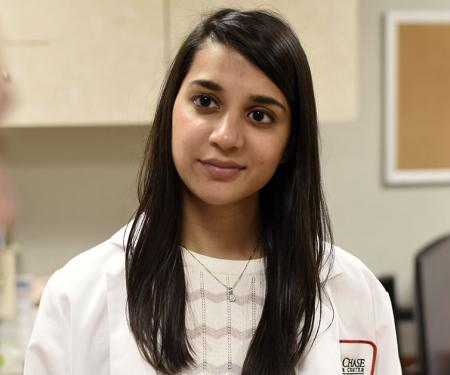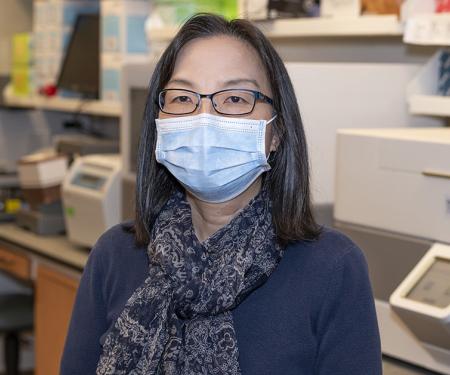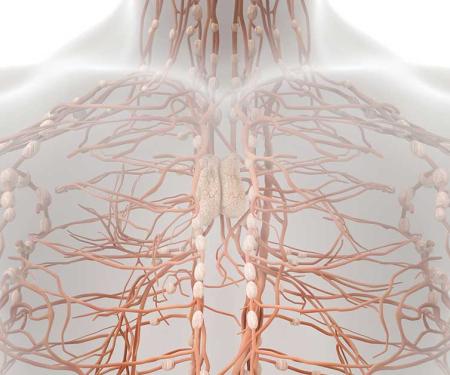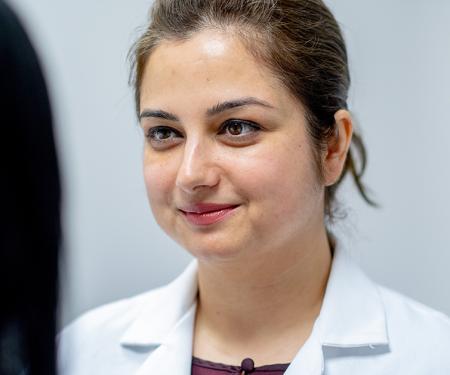Related Articles
00 / 00
Lymphoma begins in lymphocytes, a type of white blood cell that is part of the body’s immune system. Lymphocytes help battle infection and disease as they are transported throughout the body via the lymphatic system (a widespread network of vessels and ducts).
Lymphoma occurs when lymphocytes mutate and grow out of control for unknown reasons. Lymphomas crowd out normal white cells, preventing the immune system from effectively fighting infection.
Lymphoma has two primary types: Hodgkin lymphoma (previously called Hodgkin's disease) and non-Hodgkin lymphoma.
Although Hodgkin lymphoma and non-Hodgkin lymphoma both start in lymphocytes, the two types have different behaviors, clinical features, and treatment responses:
Hodgkin lymphoma most often begins in the lymph nodes, which are small, bean-shaped organs found in the neck, underarm, groin, or inside the chest, abdomen, and pelvis. The body has hundreds of lymph nodes that filter out foreign particles and harmful cells that travel along with infection-fighting lymphocytes. When lymphoma cells are present in the body, they can gather and form masses in the lymph nodes.
Hodgkin lymphoma is uncommon, accounting for only about 10 percent of all lymphoma cases. It is typically diagnosed early, is considered highly treatable, and is most commonly seen in young adults and those older than age 55.
Hodgkin lymphoma usually develops from lymphocytes called B-cells. In about 95 percent of cases, it is classified as classic Hodgkin lymphoma (CHL) and is characterized by very large, abnormal B-cells called Reed-Sternberg cells.
There are four main subtypes of CHL:
The most common subtype, this disease most often affects teenagers and young adults. The affected lymph nodes, usually in the neck or chest, have mixed areas of normal cells, Reed-Sternberg cells, and prominent scar tissue.
This is found primarily in people with human immunodeficiency virus (HIV) infection. The affected lymph nodes, usually in the upper half of the body, contain many Reed-Sternberg cells in addition to other cell types.
This disease is a rare subtype that usually occurs in the upper half of the body and typically involves only a small number of lymph nodes.
This subtype is rare and aggressive, occurring mainly in older adults and those with HIV infection. It is generally diagnosed in advanced stages and is most often found in the abdomen, spleen, liver, and bone marrow.
The remaining five percent of Hodgkin lymphoma diagnoses are known as nodular lymphocyte-predominant Hodgkin lymphoma (NLPHL). The cancerous cells present in the body are variants of Reed-Sternberg cells and are often called “popcorn cells” because of their shape and appearance. Most common in men in their 30s and 40s, NLPHL tends to grow more slowly than the other subtypes.
Non-Hodgkin lymphoma (NHL), which tends to develop in older adults, accounts for about 90 percent of lymphoma diagnoses. NHL represents a large group of different lymphomas that do not have the Reed-Sternberg cells that differentiate Hodgkin lymphoma.
The numerous types of non-Hodgkin lymphoma are often divided into indolent (slow-moving, usually with few symptoms) and aggressive (growing quickly, often causing symptoms) categories. These two forms of NHL present different clinical behaviors and have different approaches to treatment. Some lymphomas, such as mantle cell lymphoma, have a highly variable rate of progression and don’t fit perfectly into either growth category.
Non-Hodgkin lymphoma is also grouped by type based on whether the lymphoma has started in B-cells or T-cells. Most begin in B-cells, which normally create antibodies that help prevent foreign substances from causing problems in the body. T-cells differ from B-cells in that they directly attack and destroy foreign substances.
The most common symptom of most types of lymphoma is swollen or enlarged lymph nodes in the neck, underarms, or groin (typically without pain). The other possible signs and symptoms of lymphoma are:
Researchers haven’t yet identified the exact reason why many cases of lymphoma occur. However, it is more likely to develop in individuals who:
Having any of these risk factors does not mean you will develop lymphoma, and many people with lymphoma have no risk factors. However, you should consult with your doctor if you have any concerns.




